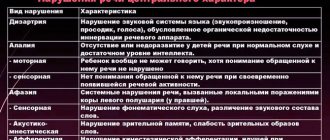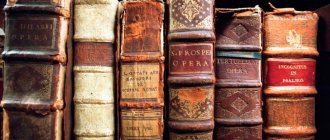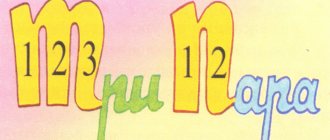When we talk about art and literary creativity, we are focused on the impressions that are created when reading. They are largely determined by the imagery of the work. In fiction and poetry, there are special techniques for enhancing expressiveness. A competent presentation, public speaking - they also need ways to construct expressive speech.
For the first time, the concept of rhetorical figures, figures of speech, appeared among the orators of ancient Greece. In particular, Aristotle and his followers were involved in their study and classification. Delving into the details, scientists have identified up to 200 varieties that enrich the language.
Means of expressive speech are divided according to language level into:
- phonetic;
- lexical;
- syntactic.
The use of phonetics is traditional for poetry. Musical sounds often predominate in a poem, giving poetic speech a special melodiousness. In the drawing of a verse, stress, rhythm and rhyme, and combinations of sounds are used for emphasis.
Types of means of expression
Anaphora is the repetition of sounds, words or phrases at the beginning of sentences, poetic lines or stanzas. “The golden stars dozed off...” - repetition of the initial sounds, Yesenin used phonetic anaphora.
And here is an example of lexical anaphora in Pushkin’s poems:
Alone you rush across the clear azure, Alone you cast a dull shadow, Alone you sadden the jubilant day.
Epiphora is a similar technique, but is much less common, in which words or phrases are repeated at the end of lines or sentences.
The use of lexical devices associated with a word, lexeme, as well as phrases and sentences, syntax, is considered as a tradition of literary creativity, although it is also widely found in poetry.
Conventionally, all means of expressiveness of the Russian language can be divided into tropes and stylistic figures.
Important table and references
For those who want to make their speech rich and vivid, for the convenience of perceiving the material, all the terms are summarized in a table from which you can see the name of the language device, its meaning and examples of the use of artistic and visual devices in literature:
And if you want to “plunge deeper into this topic”), here is a list of dictionaries, including figurative and expressive means of the Russian language:
Trails
Tropes are the use of words and phrases in a figurative sense. Paths make speech more figurative, enliven and enrich it. Some tropes and their examples in literary work are listed below.
Epithet is an artistic definition. Using it, the author gives the word additional emotional overtones and his own assessment. To understand how an epithet differs from an ordinary definition, you need to understand when reading whether the definition gives a new connotation to the word? Here's a simple test. Compare: late autumn - golden autumn, early spring - young spring, quiet breeze - gentle breeze.
Personification is the transfer of signs of living beings to inanimate objects, nature: “The gloomy rocks looked sternly...”.
Comparison is a direct comparison of one object or phenomenon with another. “The night is gloomy, like a beast...” (Tyutchev).
Metaphor is the transfer of the meaning of one word, object, phenomenon to another. Identifying similarities, implicit comparison.
“There is a red rowan fire burning in the garden...” (Yesenin). The rowan brushes remind the poet of the flame of a fire.
Metonymy is renaming. Transferring a property or meaning from one object to another according to the principle of contiguity. “The one in felt, let’s argue” (Vysotsky). In felt (material) - in a felt hat.
Synecdoche is a type of metonymy. Transferring the meaning of one word to another based on a quantitative connection: singular - plural, part - whole. “We all look at Napoleons” (Pushkin).
Irony is the use of a word or expression in an inverted, mocking sense. For example, the appeal to the Donkey in Krylov’s fable: “Are you crazy, smart one?”
Hyperbole is a figurative expression containing exorbitant exaggeration. It may relate to size, meaning, strength, and other qualities. Litota is, on the contrary, an exorbitant understatement. Hyperbole is often used by writers and journalists, and litotes is much less common. Examples. Hyperbole: “The sunset burned with one hundred and forty suns” (V.V. Mayakovsky). Litota: “a little man with a fingernail.”
Allegory is a specific image, scene, image, object that visually represents an abstract idea. The role of allegory is to suggest subtext, to force one to look for hidden meaning when reading. Widely used in fable.
Alogism is a deliberate violation of logical connections for the purpose of irony. “That landowner was stupid, he read the newspaper “Vest” and his body was soft, white and crumbly.” (Saltykov-Shchedrin). The author deliberately mixes logically heterogeneous concepts in the enumeration.
Grotesque is a special technique, a combination of hyperbole and metaphor, a fantastic surreal description. An outstanding master of Russian grotesque was N. Gogol. His story “The Nose” is based on the use of this technique. A special impression when reading this work is made by the combination of the absurd with the ordinary.
Means of expression (table) material for preparing for the Unified State Exam (GIA, 9th, 11th grade) on the topic
Language means of expression.
Tropes are the use of a word in a figurative sense.
| List of tropes | Meaning of the term | Example | |
| Allegory | Allegory. A trope consisting in an allegorical depiction of an abstract concept using a concrete, life-like image. | In fables and fairy tales, cunning is shown in the form of a fox, greed - in the form of a wolf. | |
| Hyperbola | A means of artistic representation based on exaggeration. | The eyes are huge, like spotlights. | |
| Grotesque | Extreme exaggeration, giving the image a fantastic character. | The mayor with a stuffed head at Saltykov-Shchedrin. | |
| Irony | Ridicule, which contains an assessment of what is being ridiculed. A sign of irony is a double meaning, where the truth is not what is directly expressed, but its opposite, implied. | Where are you, smart one, coming from, head? (I. Krylov.) | |
| Litotes | A means of artistic representation based on understatement (as opposed to hyperbole). | The waist is no thicker than a bottle neck. (N. Gogol.) | |
| Metaphor, expanded metaphor | Hidden comparison. A type of trope in which individual words or expressions are brought together by the similarity of their meanings or by contrast. Sometimes the entire poem is an expanded poetic image. | With a sheaf of your oat hair You belong to me forever. (S. Yesenin.) | |
| Personification | This is an image of inanimate objects in which they are endowed with the properties of living beings, the gift of speech, the ability to think and feel. | What are you howling about, wind? night, Why are you complaining so madly? (F. Tyutchev.) | |
| Periphrase (or paraphrase) | One of the tropes in which the name of an object, person, phenomenon is replaced by an indication of its most characteristic features, enhancing the figurativeness of speech. | King of beasts (instead of lion) | |
| Synecdoche | A type of metonymy consisting in transferring the meaning of one object to another based on the quantitative relationship between them: part instead of the whole; whole in the meaning of part; singular in the meaning of general; replacing a number with a set; replacement of a specific concept with a generic one. | All flags will be visiting us. (A. Pushkin.); Swede, Russian stabs, chops, cuts. We all look at Napoleons. | |
| Comparison | A technique based on comparing a phenomenon or concept with another phenomenon. | The ice, hardened on the chilly river, lies like melting sugar. | |
| Epithet | Figurative definition; a word that defines an object and emphasizes its properties. | The grove dissuaded golden with Birch's cheerful tongue. | |
FIGURES OF SPEECH
A generalized name for stylistic devices in which a word, unlike tropes, does not necessarily have a figurative meaning.
| Figure | Meaning of the term | Example |
| Anaphora (or unity of command) | Repetition of words or phrases at the beginning of sentences, poetic lines, stanzas. | I love you, Petra’s creation, I love your strict, slender appearance... |
| Antithesis | Stylistic device of contrast, opposition of phenomena and concepts. Often based on the use of antonyms. | And the new so denies the old!.. It ages before our eyes! Already shorter than the skirt. It's already longer! |
| Gradation | Graduality is a stylistic means that allows you to recreate events and actions, thoughts and feelings in the process, in development, in increasing or decreasing significance. | I don’t regret, I don’t call, I don’t cry, Everything will pass like smoke from white apple trees. |
| Inversion | Rearrangement; a stylistic figure consisting of a violation of the general grammatical sequence of speech. | He passed the doorman like an arrow and flew up the marble steps. |
| Lexical repetition | Intentional repetition of the same word in the text. | Forgive me, forgive me, forgive me! And I forgive you, and I forgive you. I don’t hold any grudges, I promise you that, But only you will forgive me too! |
| Pleonasm | Repetition of similar words and phrases, the intensification of which creates a particular stylistic effect. | My friend, my friend, I am very, very sick. |
| Oxymoron | A combination of words with opposite meanings that do not go together. | Dead souls, bitter joy, sweet sorrow, ringing silence. |
| Rhetorical question, exclamation, appeal | Techniques used to enhance the expressiveness of speech. A rhetorical question is asked not with the goal of getting an answer, but for the emotional impact on the reader. | Where will you gallop, proud horse, and where will you land your hooves? (A. Pushkin.) What a summer! What a summer! Yes, it's just witchcraft. (F. Tyutchev.) |
| Syntactic parallelism | A technique consisting in similar construction of sentences, lines or stanzas. | I look to the future with fear, I look at the past with longing... |
| Default | A figure that leaves the listener to guess and think about what will be discussed in a suddenly interrupted statement. | You'll be going home soon: Look... So what? To tell the truth, no one is very concerned about my fate. |
| Ellipsis | A figure of poetic syntax based on the omission of one of the members of a sentence, easily restored in meaning. | We turned villages into ashes, cities into dust, and swords into sickles and plows. (V. Zhukovsky.) |
| Epiphora | A stylistic figure opposite to anaphora; repetition of a word or phrase at the end of poetic lines. | Dear friend, even in this quiet House Fever strikes me. I can’t find a place in a quiet House Near a peaceful fire. (A. Blok.) |
Expressive - emotional vocabulary
| Conversational. | Words that have a slightly reduced stylistic coloring compared to neutral vocabulary, are characteristic of spoken language, and are emotionally charged. | Dirty, loud, bearded. | |||
| Emotionally charged words | Evaluative in nature, having both positive and negative connotations. | Adorable, disgusting, villain | |||
| Words with suffixes of emotional evaluation. | Words with suffixes of emotional evaluation. | Cute, little bunny, little brain, brainchild. | |||
| PICTURE POSSIBILITIES OF MORPHOLOGY | |||||
| 1. Expressive use of case, gender, animation, etc. | Somehow I don't have enough air, I drink the wind, I swallow the fog... We are vacationing in Sochi. How many Plyushkins have divorced! | ||||
| 2. Direct and figurative use of verb tense forms | I came to school yesterday and saw a notice: “Quarantine.” Oh, I was so happy! | ||||
| 3. Expressive use of words from different parts of speech. | The most amazing story happened to me! I received an unpleasant message. I was visiting her. This cup will not pass you by. | ||||
| 4. Use of interjections and onomatopoeic words. | Here's closer! They gallop... and into the yard Evgeniy! "Oh!" — and lighter than a shadow, Tatyana jumped into another hallway. | ||||
SOUND EXPRESSIVENESS
| Means | Meaning of the term | Example |
| Alliteration | A technique to enhance imagery by repeating consonant sounds. | The hiss of foamy glasses and the blue flame of punch... |
| Alternation | Alternation of sounds. Change of sounds that occupy the same place in a morpheme in different cases of its use. | Tangent - touch, shine - shine. |
| Assonance | A technique to enhance imagery by repeating vowel sounds. | The thaw is boring to me: the stench, the dirt, in the spring I am sick. (A. Pushkin.) |
| Sound recording | A technique for enhancing the visual power of a text by constructing phrases and lines in a way that would correspond to the picture being reproduced. | For three days I could hear how on the long, boring road the joints were clicking: east, east, east... (P. Antokolsky reproduces the sound of carriage wheels.) |
| Onomatopoeia | Using the sounds of language to imitate the sounds of living and inanimate nature. | When the mazurka thunder roared... (A. Pushkin.) |
PICTURE POSSIBILITIES OF SYNTAX
| 1. Rows of homogeneous members of a sentence. | When an empty and weak person hears flattering feedback about his dubious merits, he revels in his vanity, becomes arrogant and completely loses his tiny ability to be critical of his actions and his person. |
| 2. Sentences with introductory words, appeals, isolated members. | Probably, there, in my native places, just as in my childhood and youth, the baths bloom in the swampy backwaters and the reeds rustle, making me with their rustle, with their prophetic whispers, the poet that I became, that I was, that I will be, when I die. |
| 3. Expressive use of sentences of various types (complex, complex, non-union, single-part, incomplete, etc.). | They speak Russian everywhere; this is the language of my father and my mother, this is the language of my nanny, my childhood, my first love, almost all the moments of my life that entered my past as an integral property, as the basis of my personality. |
| 4. Dialogic presentation. | - Well? Is it true that he is so good-looking? - Surprisingly good, handsome, one might say. |
| 5. Parcellation is a stylistic technique of dividing a phrase into parts or even individual words in a work in order to give the speech intonation expression through its abrupt pronunciation. | Liberty and Fraternity. There will be no equality. Nobody. No one. Not equal. Never. (A. Volodin.) He saw me and froze. Numb. He fell silent. |
| 6. Non-union or asyndeton - deliberate omission of conjunctions, which gives the text dynamism and swiftness. | Swede, Russian stabs, chops, cuts. People knew: somewhere, very far from them, there was a war going on. If you are afraid of wolves, do not go into the forest. |
| 7. Polyconjunction or polysyndeton - repeating conjunctions serve to logically and intonationally emphasize the parts of the sentence connected by the conjunctions. | The ocean walked before my eyes, and swayed, and thundered, and sparkled, and faded, and glowed, and went somewhere into infinity. I will either burst into tears, or scream, or faint. |
Figures of speech
Stylistic figures are also used in literature. Their main types are shown in the table:
| Repeat | At the beginning, end, at the junction of sentences | This cry and the lines, these flocks, these birds |
| Antithesis | Opposition. Antonyms are often used. | Long hair, short mind |
| Gradation | Arrangement of synonyms in increasing or decreasing order | Smolder, burn, glow, explode |
| Oxymoron | Connecting contradictions | A living corpse, an honest thief. |
| Inversion | Word order changes | He came late (He came late). |
| Parallelism | Comparison in the form of juxtaposition | The wind stirred the dark branches. Fear stirred in him again. |
| Ellipsis | Omitting an implied word | By the hat and out the door (he grabbed it and went out). |
| Parcellation | Dividing a single sentence into separate ones | And I think again. About you. |
| Multi-Union | Connecting through repeating conjunctions | And me, and you, and all of us together |
| Asyndeton | Elimination of unions | You, me, he, she – together the whole country. |
| Rhetorical exclamation, question, appeal. | Used to enhance feelings | What a summer! Who if not us? Listen, country! |
| Default | Interruption of speech based on a guess, to reproduce strong excitement | My poor brother...execution...Tomorrow at dawn! |
| Emotional-evaluative vocabulary | Words expressing attitude, as well as direct assessment of the author | Henchman, dove, dunce, sycophant. |
Basic language means: tropes
We have been exposed to trails since we were in school. Let's remember the most common of them:
- The epithet is the most famous and common trope. Often found in poetic works. An epithet is a colorful, expressive definition that is based on a hidden comparison. Emphasizes the features of the described object, its most expressive features. Examples: “ruddy dawn”, “easy character”, “golden hands”, “silver voice”.
- Simile is a word or expression based on the comparison of one object with another. Most often it is formalized in the form of a comparative turnover. You can recognize it by the use of conjunctions characteristic of this technique: as if, as if, as if, as, exactly, that. Let's look at examples: “transparent like dew,” “white like snow,” “straight like a reed.”
- Metaphor is a means of expression based on hidden comparison. But, unlike comparative turnover, it is not formalized by unions. A metaphor is built by relying on the similarity of two objects of speech. For example: “church onions”, “whisper of grass”, “tears of heaven”.
- Synonyms are words that are similar in meaning, but differ in spelling. In addition to classical synonyms, there are contextual ones. They take on a specific meaning within a particular text. Let's get acquainted with the examples: “jump - jump”, “look - see”.
- Antonyms are words that have directly opposite meanings to each other. Like synonyms, they can be contextual. Example: “white - black”, “shout - whisper”, “calm - excitement”.
- Personification is the transfer of signs and characteristic features of an animate object to an inanimate object. For example: “the willow shook its branches,” “the sun smiled brightly,” “the rain was knocking on the roofs,” “the radio was chirping in the kitchen.”
Test "Means of Artistic Expression"
To test your understanding of the material, take a short test.
Read the following passage:
“There the war smelled of gasoline and soot, burnt iron and gunpowder, it scraped with caterpillar tracks, screeched from machine guns and fell into the snow, and rose again under fire...”
What means of artistic expression are used in the excerpt from K. Simonov’s novel?
Swede, Russian - stabs, chops, cuts.
Drumming, clicks, grinding,
The thunder of guns, stomping, neighing, groaning,
And death and hell on all sides.
A. Pushkin
What techniques does the author use to convey the tension of the battle? Determine what role the letter “r” and sound combinations with it play in the poem?
The answer to the test is given at the end of the article.
Expressive language is, first of all, an internal image that arises when reading a book, listening to an oral presentation, or a presentation. To manipulate images, visual techniques are needed. There are enough of them in the great and mighty Russian. Use them, and the listener or reader will find their own image in your speech pattern.
Study expressive language and its laws. Determine for yourself what is missing in your performances, in your drawing. Think, write, experiment, and your language will become an obedient tool and your weapon.
Answer to the test
K. Simonov. The personification of war in the passage. Metonymy: howling soldiers, equipment, battlefield - the author ideologically connects them into a generalized image of war. The techniques of expressive language used are polyunion, syntactic repetition, parallelism. Through this combination of stylistic techniques when reading, a revived, rich image of war is created.
A. Pushkin. The poem lacks conjunctions in the first lines. In this way the tension and richness of the battle are conveyed. In the phonetic design of the scene, the sound “r” plays a special role in different combinations. When reading, a rumbling, growling background appears, ideologically conveying the noise of battle.
If you were unable to give the correct answers while answering the test, do not be upset.
Just re-read the article. Previous articlePreviousNext articleNext
Phonetic means: sound recording
Alliteration - Completehsometimes in the swamp depthswAnd/ Hwow wordswbut, damnwsmart wurshat kamawand - a combination of hissing consonants helps to convey the rustling of the reeds. The repetition of consonants creates an image.Assonance - LYublYu birch treesat Ratsskwow It's brightwow, then gratstnwow – conveys slight sadness and tenderness. Repetition of vowels, creating an image.Gradation - I came, I saw, I conquered! The arrangement of words and expressions is in ascending order (inSolve task 26 of the Unified State Exam in the Russian language with answers.
Types of speech expressiveness
Let's take a closer look at the main types of means of expressive speech, namely tropes, since they most often come across in exam tasks. To do this, we will analyze each separately.
Paths. Features of use
We have already become familiar with the definition of tropes. Now let’s look at what means of expressive speech they represent:
These types of expressive speech help to diversify it and artistically transform it. Identifying tropes in a text or sentence is not a difficult task. It is important to distinguish them and know the characteristics of each type.
Lexical means. Content in sentence and text
We encounter these tools all the time, even in everyday life. With the help of synonyms we describe certain phenomena and objects, and with the help of antonyms we focus attention on the differences. But there are some nuances that need to be remembered in each category of lexical means presented:
These types of verbal expressiveness are found everywhere and you need to “know them by sight.” Difficulties may arise only with the last group, but by analogy you can guess the belonging of words to a specific group.
Syntactic means of expression
In this category, you should pay attention to the syntactic structure of the sentence. It is advisable to analyze it and identify why it is complicated. Then it will be possible to determine the presence of syntactic means of expressiveness. Let's look at some of them:
As you can see, these means of speech expression occur quite often in sentences.
Figures of speech. Techniques of expressiveness
There are also figures of expressive speech that help to focus the attention of the reader or listener on certain significant things and actions. The table shows all the figures of speech:
These terms are most often found in tasks and need to be found. Only knowing the theory can you correctly determine the figure of speech.
Each of the listed types of means of speech expression plays an important role for artistic speech. Each time it becomes richer, which makes it more diverse and wider in use.
How to determine the type of trail
Determining means of expression is truly a difficult task. It is very easy to get confused in all sorts of definitions and features. Using examples from different literary texts, we will analyze all the ways of defining tropes.
Means of expression and their definition. Algorithm
In order to start working with text, you always need to have a specific action plan or algorithm that will help you not miss anything important. To determine the type of trail or figure, you must follow these steps:
- carefully read the source text several times;
- understand the main essence and meaning that the author was trying to convey;
- analyze each sentence for the presence of means of expression and determine their types;
- sign all the necessary information in pencil above the proposals;
- enter into the task the answer options that were required of you.
If you strictly follow this rule, then the task will be completed without errors.
Examples of defining a means of expression. Artistic text
Now let's look at how to do this work on a specific text. It is necessary to develop practical skills in performing this kind of tasks, because then it will be quite easy to distinguish them from each other.
Let's analyze each proposal:
- 1 and 2 – there are rows of homogeneous members of the sentence, that is, syntactic means of expressiveness;
- 3 – no speech means;
- 4 and 5 – exclamatory sentences, that is, syntactic means of expressiveness;
- 6 – rows of homogeneous members of the sentence;
- 7 – no trails;
- 8 – comparison, refers to such a means of expression as a trope.
Thus, it is necessary to analyze each sentence of the presented text so as not to make a mistake in determining the means. The tables presented will help you quickly and efficiently learn the theory on this issue.
Syntactic tricks
Connecting words into a coherent text is the basic principle of a syntactic technique. The author constructs sentences or linguistic structures in the work in a special way, thereby producing an emotional impact on the reader, using the method of organizing the statement.
Basic syntactic techniques:
| · Anaphora; Epiphora; · Oxymoron; · Parcellation; · Citation; | · Opposition; · Lexical repetition; · Default; · A rhetorical question; · Chiasmus; |
Inversion
This is a change from the traditional, direct word order. For example, in Russian the following sequence is perceived as direct order: first the subject, then the predicate. If the author's intention requires this, the writer or poet can swap them. Let's look at an excerpt from a poem by A. S. Pushkin:
The forest drops its crimson headdress, The frost silvers the withered field,
The day will pass, as if against its will,
And it will disappear beyond the edge of the surrounding mountains.
In this passage we observe inversion (first the predicate, then the subject) and syntactic parallelism in the first three lines.
Russian has a free word order; but this does not mean that any word order is direct.








